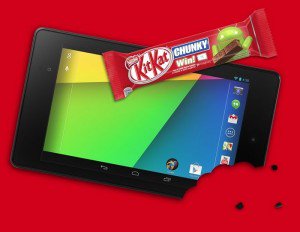Share This
Related Posts
Tags
Nexus 5 on Kitkat Diet
By Anca Gagiuc on Jan 14, 2014 in Technology
The Nexus line offered by Google has created a clear identity; behind each version stands the will to make the best, purest, Android-istic phone, at a price that matches what most carriers and manufacturers would charge with a regular two-year contract. On Halloween Google launched Nexus 5 after mon ths of “accidental” leaks, powered by Android 4.4 Kitkat software.
ths of “accidental” leaks, powered by Android 4.4 Kitkat software.
The Nexus line represents Google hardware running on Google software, built by a manufacturing partner (LG), but with Google’s involvement in the creation of the hardware. The result is a 5-inch phone, thinner and lighter than the previous version, quite difficult to use for those with small hands. It’s coated in a soft-touch plastic (not the best choice for a premium phone), with a silky texture that provides just enough friction to keep the phone in hand.
The backside has a rounded finish that feels nicely in the palm of the hand and the 130g it weights makes it light enough for a one-hand usage. The rear camera in the top left-hand corner looks and feels odd, bulging the surface and acting as prop when the phone is laid down flat, basically left completely unprotected. The screen is full HD IPS Plus LCD that makes text on websites crisp and easily readable, while photos and videos offer details and intense color. Furthermore, the screen’s brightness makes reading in direct light much easier.
The technical specifications feature a 2.3 GHz quad-core Qualcomm Snapdragon 800 processor backed by 2GB of RAM, 16 or 32 GB of storage (no micro SD slot for expansion), 8MP rear camera with OIS (optical image stabilization) and a 1.3MP front camera. The HDR (high dynamic range) function helps produce greatly improved detail and color in photos. Based on these, the phone is as future-proofed as possible. The device moves fluently and at good speed – apps load rapidly, games flow without fazing, overall the phone moves beautifully and it can compete with the speedy HTC One or Samsung Galaxy S4. One aspect has been disregarded though: the scrolling performance still gives that sense of lag as in Nexus 4. Even with this version Google fails to offer that one-to-one relationship between the finger and the screen.
The latest Android OS, 4.4 Kitkat, requires less memory and this makes multitasking faster than before. The LTE 4G increases downloads and page loads for those with a 4G contract. However, with great power comes greater battery usage – the Nexus 5 will last most of a demanding work day, more precisely it enables around two hours of web browsing with emails coming in all day and music playback for about two hours; playing games decreases considerably the battery life. Overall, it lasts less than Sony Xperia Z1 and the iPhone 5.
The operating system is free and gives full access to the over 850,000 standard Android apps in Google Play store. The most notable change in the current version is the progressive integration of Google Now, Google’s intelligent personal digital assistant. It connects with the Google account, pulling information from Gmail, calendar, contacts, searches and mapping activities, and gives helpful suggestions based on the user’s requests. This feature received a dedicated screen on the homescreen, but can be activated from any home screens by simply tapping in the search box at the top of the screen, or by speaking the words “OK Google”. This function, inspired from Google Glass’ “OK Glass”, allows vocal search without pressing any buttons. However, for the search with keywords, the screen has to be on the homescreen.
The default photo applications are “Photos” and “Gallery”, one is the new Google+ photo app, and the second is the traditional photo album. This is somewhat strange as it shows a lack of focus here and of consistency for the user experience.
One worthy change in software is the new full-screen view which hides the menu bar at the bottom and the notification bat at the top; this modification does a great job at maximizing the screen space when reading or viewing content. The integration of text messages into Google’s Hangouts chat app is great if the user is also a Hangouts user as it shows if the contacts are available on Hangout or just via SMS when trying to send the first message. Moreover, Google included caller ID which scans the internet for names and businesses that aren’t in the address book.
In conclusion, the device has a sharp and clear screen with a decent camera, and the uncluttered Android-Kitkat experience is refreshing. The fact that it ensures software updates directly from Google makes it reliable in the future as well. The price is one of its greatest features though, starting at $345 for the 16GB version or $399 for the 32GB one directly from Google Play store without a mobile phone contract.
So far, the Nexus 5 is the best offer Google has made in terms of smartphones. It probably won’t take the world by storm, but a part of the users will be happy with how Google evolves.
